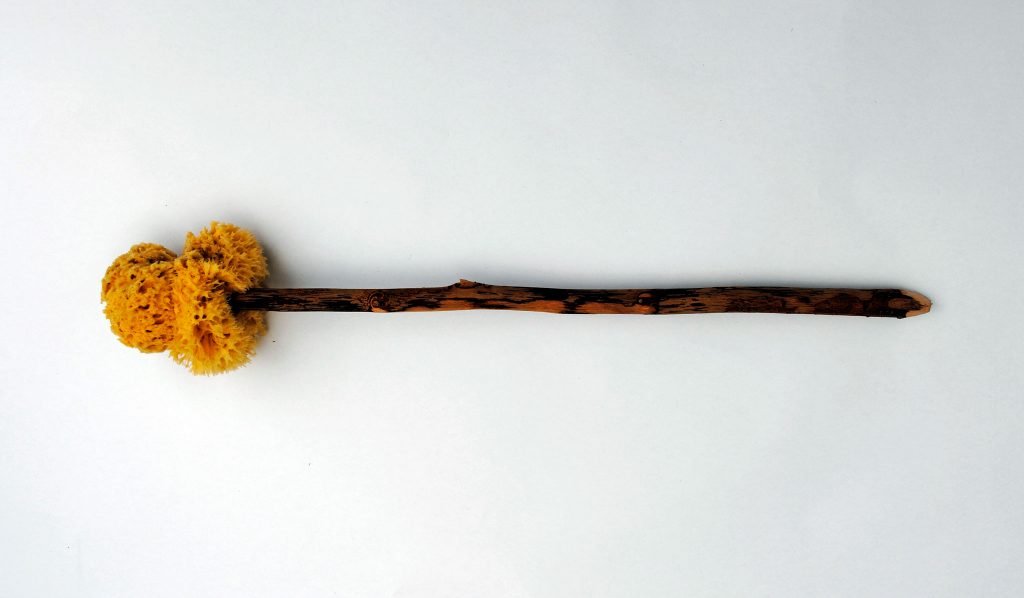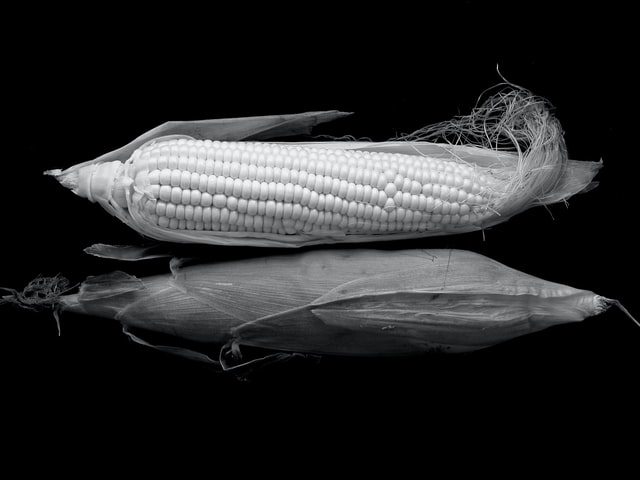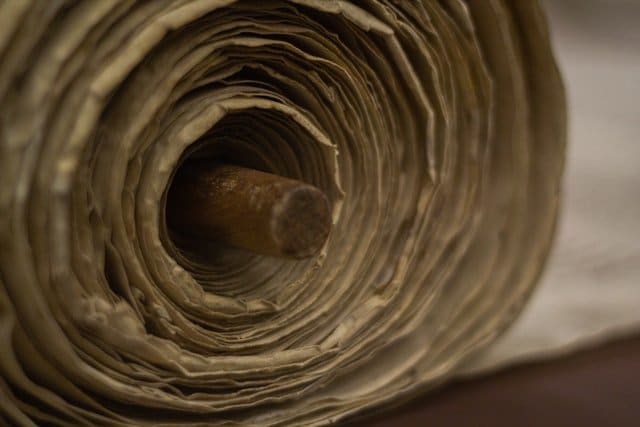What Did People Use Before Toilet Paper?
Last Updated on September 13, 2023 by toilethaven
What did humans use before toilet paper was invented?
The other day, I was sitting on my state-of-the-art electric bidet toilet seat, and I could not help but wonder what folks were using before toilet paper was invented. And then there is me. I used to use toilet paper, but no longer!
That thought bugged me for a while, so I started digging for information to understand how my ancestors survived without this vital resource.
I now have the answer to this query, and I must admit I was quite intrigued by some of the things I learned, if not shocked.
Before toilet paper was invented, what people used depended on their location and social status. Royals, the wealthy, and people in old civilizations had it easy, while peasants had it rough. Literally.
Depending on your location and social status, you would likely use green leaves, stones, snow, ropes, sticks, wool, seashells, corn cobs, fruit skins, water, or even bare hands.
In order to use toilet paper, you need a toilet first. Wrong! Old folks did not have toilets. These guys lacked both toilet paper and the toilet themselves.
So, between the toilet and the toilet paper, which came first? That is another subject I researched, and I have the answer for you.
When was Toilet Paper Invented?
Toilet paper was invented in China in the 14th century. Before there was toilet paper, there was printed paper, and the then emperor was tired of using it to wipe his rear end.
He, therefore, gave out an order demanding that a paper (plain) measuring 2 by 3 feet be made for his use in the bathroom. Suffice it to say the emperor wouldn’t be so happy with today’s toilet paper sizes.
Unfortunately, these were many centuries before information could travel as fast as it does today, and hence, Americans had no way of knowing that folks in the East were wiping way better than them.
Americans did not enjoy the convenience of toilet paper until 1857 when a New York businessman, Joseph Guyetty, started selling the “Medicated Paper for the Water Closets.” This was when flush toilets were commonly known as water closets.
To appreciate where people were coming from, Guyetty marketed toilet paper as the “Greatest necessity of the age.” It was neither the strongest nor the softest toilet paper, but people were happy using it.
Guyetty, however, made sure that each sheet had his name on it. A strange thing, he probably didn’t trust history books with, according to him, the credit he deserved.
The person credited with the invention of the flush toilet was Sir John Harrington in 1592. Have you ever wondered why toilets are called Johns? Now you know!
Flush toilets, however, became available to most people in the 1890s, around the same time when toilet paper was also becoming more common in bathrooms.
What People Used Before Toilet Paper Was Invented
Now that we know toilet paper was non-existent until the 14th century, what were people in different parts of the world using? Let us look at the options people had from the different corners of the globe.
Romans

I would say that the Romans (present-day Italy) had the easiest solution for wiping their behinds, especially the royals and the wealthy. It is important to remember that the Roman Empire was way bigger than present-day Italy, so the royals and wealthy merchants were spread throughout the empire.
One of the most preferred items was wool. Given how soft wool is, especially when compared to stones and coconut husks, you can then understand how lucky these folk were. I, however, don’t know what they did with the wool after wiping since modern plumbing as we know it today didn’t exist.
Romans who didn’t fancy having their hands too close to their behinds came up with another tool to wipe their rear end with. This involved tying a sponge to one end of a short stick.
After use, the stick would then be dipped in a bucket with salty water for the next user. This leaves me with many questions in mind, but I don’t want to think about it as it is gross.
Some Romans and Greeks used clay. The clay would be rolled in oval or circle shapes and then smoothed. I do not know if they would throw it away or preserve it for the next use.
Americans

Needless to say, before Europeans arrived in America, Native Americans occupied the land, and they, too, needed to poop and wipe. So what did they use?
Since toilets at that time did not exist, folks would look for a nearby bush, squat, and go ahead to do their business. They would then look for some fresh green leaves or corn cobs, wipe them, and proceed to live their lives the best way they knew how.
When Europeans arrived in America, they built simple bathrooms, but flush toilets and modern plumbing were still non-existent. They would wipe themselves like the Natives and later use newspapers, magazines, catalogs, and pretty much any paper they could find.
You would be interested to know that the Farmer’s Almanac even came with a hole to help people hang it in their bathrooms for easier use. This continued for many years, even after Gayetty started making toilet paper.
Gayetty’s toilet paper often left splinters, which did not happen with old papers. Many people did not see the need to pay for it.
China

Apart from inventing toilet paper, China also invented printing paper many years before the toilet paper. The problem was that not everybody could access the printed paper; hence, it was reserved for the royals and the wealthy.
Poor folks used whatever else they could find. Remember, at that time, there were no flush toilets even in China, so people would do their business in wooden buckets filled with water and then use leaves or whatever else they came across to wipe.
The poor farmers would dig a hole in the ground and a trench leading to the pig pen. They would do their business in the hole and let their waste flow where the pigs would be waiting for the snack!
Middle East and India

These guys have kept their “wiping tradition” until today. After doing their business, they would wipe their behinds strictly using their left hand and then clean it with water.
It was not unusual to have people help themselves in a river, clean their hands with the same water, and carry some home for their daily use. The use of the hand is still in effect in most of that region to date, and that is why the right hand is the most preferred one for a handshake.
Water is, without a doubt, the best way to clean yourself after using a toilet (even today), and that’s why a Muslim traveler to China at the time was surprised to see them wiping with paper.
He noted, “The Chinese are not careful about cleanliness, and they do not wash with water when they have done their necessities but only wipe themselves with paper.”
Japanese
Japan is probably the one country where almost every bathroom has a bidet, but things have not always been that way. Believe it or not, the Japanese used a stick similar to that used by the Romans, but the sponge had to be a little thinner since they used it t clean around and inside the anus.
Eskimos
Eskimos used the only thing they had at their disposal to wipe themselves. Snow. Given the sensitivity of that particular body part, I can imagine how cold the snow must have been, especially if you needed “to go” in the morning.
Snow is, however, in my opinion, a better alternative than some other used items like coconut husks or stones.
What Next after Toilet Paper?
Toilet Paper was a revolutionary invention. Apart from being gentle on the skin, it works well with modern plumbing, whether connected to a sewer line or a septic system. I can only imagine how we would be able to use flush toilets while wiping with leaves or stones.
Bidets (pronounced as be-day) are becoming more popular these days, given how thorough they are in cleaning, not to mention other advantages. Depending on your preference and budget, you can buy one of the following bidets:
- Stand-alone bidets
- Bidet toilet combos
- Hand-held bidet sprayers
- Bidet toilet seats
- Portable bidets
- Bidet attachments
Bidets are not a new invention, though. Stand-alone were invented in France in the 17th century. They have since been used in Europe and Asia but didn’t catch up with the North American market.
Bidet seats and bidet attachments have, however, excited most Americans, and most are abandoning toilet paper for them. If you want to read more on toilet paper alternatives, check out this post.